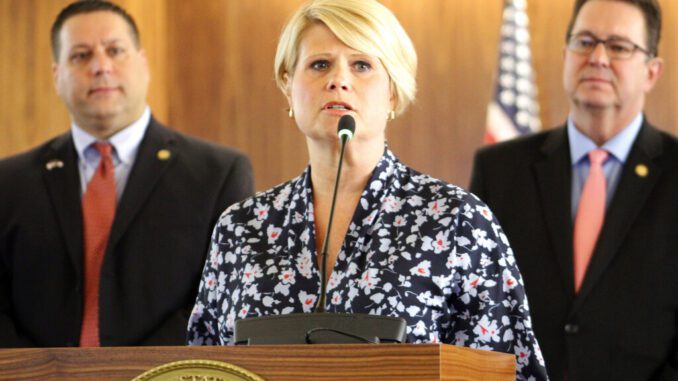
RALEIGH — North Carolina reading scores for students in kindergarten through third grade appear to be rebounding following historic pandemic drops.
State Superintendent Catherine Truitt shared data with the State Board of Education at its Jan. 5 meeting that highlighted gains in reading. Out of the more than 454,000 students assessed at the beginning of the current school year, 27,970 more K-3 students were performing at or above benchmark levels compared to the previous school year.
Truitt credited the ongoing implementation of a reading program called LETRS which is based on the “Science of Reading,” a method that prioritizes phonemic awareness, phonics, fluency, vocabulary and comprehension.
LETRS stands for Language Essentials for Teachers of Reading and Spelling, which is a product of Voyager Sopris Learning, Inc. (VSL, Inc.).
“Even with LETRS training still a work in progress, we’re seeing significant gains,” Truitt said in a related press release. “Teachers across the state are working hard to help students become proficient readers by grounding their instruction in the science of reading. They deserve to be commended for taking on this often very difficult and demanding work of learning themselves how to teach differently.”
Training in LETRS for the state’s elementary teachers started in 2021. There are three staggered cohorts engaged in the training which consists of 160 total hours. All 44,000 elementary teachers are expected to complete the training by 2024.
In her presentation to the state board, Truitt also highlighted the reduction in the percentage of at-risk students who were below benchmarks. Grade 1 saw the biggest drop, going from 44% last year to 32% this year in beginning-of-year testing.
According to the data, North Carolina K-3 students made greater gains than students in other states using the same literacy skills assessments, Amplify’s mClass.
Amplify was named specifically as the only vendor for the assessment in the Excellent Public Schools Act. Truitt told the board having one vendor was a “better way” to compare students across the state.
In first grade, the percentage of students on track this year rose by 10 points over the previous year, going from 38% to 48%. The 1.6 million students in other states saw an increase of 3 percentage points, going from 45% in 2021-22 to 48% in 2022-23.
Demographically, students across all races saw increases over the previous year’s beginning-of-year testing in reading.
More promising news included a reduction of over 5,000 fourth-grade students starting school this year labeled as “retained” when it comes to reading skills. At the start of the 2021-22 school year, the number of students with the “retained” label stood at 27,721. That number fell to 22,685 at the start of this year.
During her remarks to the board, Truitt acknowledged the literacy implementation work done by Ann Rhyne, director of the Office of Early Learning’s literacy program at the Department of Public Instruction, and her team.
“She is so dedicated to this work and I cannot thank her enough,” said Truitt.
Rhyne commented that it had been a “monumental task.”
“We are extremely proud of the shifts teachers are already making as they intentionally align instruction to what they are learning about the science of reading,” said Rhyne in a press statement. “Early data also indicate better results in schools where teachers are progress monitoring with fidelity, between benchmarks. Responding to data in a timely manner allows for ongoing, aligned instructional supports.”
The new data gives hope that rebounds may be seen in other grade levels this year.
The September 2022 release of state testing data for the previous school year showed proficiency levels in all grade levels and content areas had not returned to pre-pandemic levels, save for NC Math 3. Proficiency rates overall rose from 45% in 2020-21 to 51% in 2021-22. The 2018-19 pre-pandemic proficiency rate was 59%.
The impact of learning loss was also seen on national tests and the national average score declines in fourth- and eighth-grade math was “the largest ever recorded” and the “lowest in 20 years,” according to the National Assessment of Educational Progress (NAEP).
North Carolina’s results were not statistically different from the average national results, however, the state’s math scores dropped beyond the 20-year lows seen nationally. Reading scores for North Carolina fourth- and eighth-graders fell five points and seven points, respectively.




